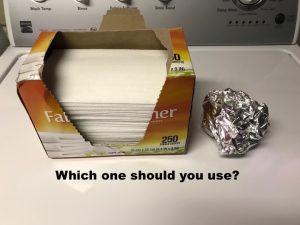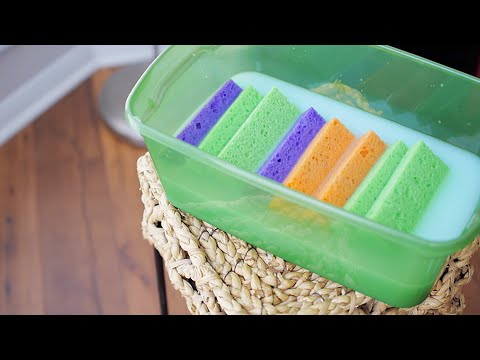
The idea of fabric softeners is great. Who doesn’t want softer clothing and sheets?
You don’t. And your little kids don’t.
As with soaps and detergents, fabric softeners may cause irritant dermatitis. Manufacturers produce some fabric softeners without dyes and perfumes to reduce the risk of skin irritation. Fabric softener overuse may make clothes more flammable, due to the fat-based nature of most softeners. Several deaths have been attributed to this phenomenon, and fabric softener makers recommend not using them on clothes labeled as flame-resistant.
Then there are allergies:
Quaternary ammonium compounds make clothes feel soft and wearable right out of the wash, but they’re known to trigger asthma and may be toxic to our reproductive systems.
Look out for these terms “biodegradable fabric softening agents” and “cationic surfactant.” And check the box that states the ingredients for distearyldimonium chloride, diethyl ester dimethyl ammonium chloride, and any variants of hydroxyethyl methyl ammonium methyl sulfate.
Perfumes are also allergy triggers so don’t fall for the “Pine scent” or “tropical beach” fragrance claims. And remember, these little sheets pack a lot of preservatives like methylisothiazolinone, a known skin allergen, and glutaral, which can trigger asthma and skin allergies. Check the artificial colors, too. D&C violet 2 has been linked to cancer.
And are we doing our bit for the environment? Aside from cluttering up landfills, a chemical in your drier sheet is glutaral (or glutaraldehyde) which is toxic to marine life.
So here are some ideas:
- Wet a washcloth with white vinegar and throw it in the drier with the laundry. (Half a cup in the rinse cycle of the washing machine is also a great refresher of clothes as it kills stinky bacteria.)
- Get rid of static cling with a ball (or more) of tinfoil. Squish it up into a ball (a bit tighter than the one in the photo.) The foil ball (s) discharge any static buildup that the clothes may experience, which keeps the clothes separated, so speeding up the drying process.
- Don’t care about too many chemicals? Try this method with sponges.
